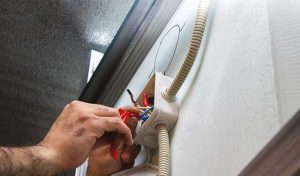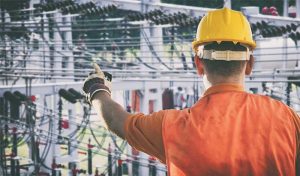We’re all familiar with terms like “high voltage” and “low voltage,” but unless you have experience in working with electrical systems, these designations might not have much meaning for you outside of what they sound like: more power and less power. As a homeowner, however, it behooves you to know what the difference between the two is—specifically when it comes to understanding low voltage.
First things first: what is low voltage and where is it used in your home?
Low voltage is voltage below the normal threshold (120V) for your standard home outlets and it’s typically used for all of your data installations: phone, internet, television, audio for home theater systems, etc. Things like network cabling in Anaconda, MT will fall under the low voltage spectrum of installations as well.
The reason low voltage installations are used for these types of amenities is generally threefold. First, there’s an extremely low risk of electric shock with low voltage systems, which is idea when you’re dealing with electronic devices. Second, low voltage installations aren’t going to produce a magnetic field like line installations (110-120V) will when they’re active, which makes them idea for transmitting data quickly and efficiently. Finally, there’s an inherently low operational cost affiliated with low voltage installations because they’re drawing far less power.
Now, you might be asking yourself, “if low voltage has so many great benefits, why isn’t my whole home running on it?” The fact is, your home simply can’t survive on low voltage lines! Things like your appliances or many types of lighting need the power of a 110V or 120V line because their operation exceeds the capabilities of what a low voltage line has to offer.
Let’s take lighting, for example. If you want to accent your landscape with outdoor lighting, a low voltage installation is perfect—it won’t suck power at high levels and will still give you the light you need. Now, if you want to use a floodlight to cast wide-reaching illumination across a parking lot, for example, you’re going to need 120V to get the job done—12V or other low voltage installations aren’t going to have that kind of power!
It’s also important to realize that line installations and low voltage circuits don’t always play nice together. As mentioned above, line installations can create a magnetic field when in use, which will disrupt data and other impulses being transmitted through a low voltage line. For this reason, when installing lines in your home, these two types of installations must be kept apart or shielded from interferences.
Still confused? Think about it like this: you don’t need the same amount of electricity to run your fridge 24/7 as you might need while talking on the phone. For this reason, low voltage lines exist and are used in your home.
If you’re experiencing problems with something like network cabling in Anaconda, MT, for example, ask your electrical contractor about problems pertaining to your low voltage lines as opposed to your standard lines. The issue might be simpler than you imagined and easily remedied!



